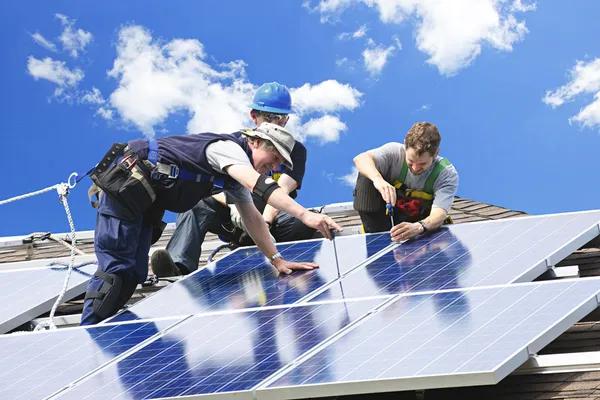Installing solar panels yourself can be a cost-effective way to harness the power of the sun and reduce your energy bills. However, it’s not a project to be taken lightly; there are several factors you need to consider before embarking on a DIY solar panel installation.
Firstly, you must understand that installing solar panels is not as simple as just attaching them to your roof. It involves considerable planning and preparation, including conducting an energy audit of your home, determining the best location for the panels, calculating how many panels you’ll need based on your energy consumption, and understanding local building codes and regulations related to solar installations.
Before starting any work, assess your roof’s condition. Solar panels are heavy and require sturdy support. If your roof is old or damaged, it may not be suitable for solar panel company installation until repairs or replacement have been done. Additionally, ensure that your roof has enough space for the number of panels you plan to install.
You also need to consider whether your house receives enough sunlight throughout the year for a solar system to be effective. The ideal location for solar panel installation is on south-facing roofs in Northern Hemisphere countries (and north-facing in Southern Hemisphere countries), with no shade from trees or other buildings during peak sunlight hours.
It’s worth noting that while DIY installation can save money upfront compared with hiring professionals, it might end up costing more in the long run if mistakes are made during setup resulting in inefficient performance or even damage requiring expensive repair work later on.
Another crucial aspect of DIY solar panel installation is safety precautions. Working at heights carries inherent risks so proper safety equipment like harnesses should always be used along with due care when handling electrical components.
Once installed correctly following all necessary guidelines and precautions, maintaining these systems is fairly straightforward involving periodic cleaning and checks ensuring they perform optimally over their lifespan which can extend beyond 25 years saving substantial amounts over time off grid electricity costs thereby making this investment worthwhile despite initial hurdles.
Lastly, you need to understand the local regulations and incentives for solar energy. Many areas offer tax credits or rebates for installing solar panels, which can offset some of the costs. However, these often require that the installation is done by a certified professional. So, even if you’re confident in your DIY abilities, it’s worth checking with local authorities before starting your project.
In conclusion, while DIY solar panel installation can be a rewarding and cost-saving venture, it requires careful planning and consideration. You must assess your home’s suitability for solar power and understand all safety procedures involved in the installation process. By doing so, you’ll be well on your way to harnessing clean renewable energy from the sun while reducing your carbon footprint and saving on energy bills.
Solarponics
4700 El Camino Real, Atascadero, California 93422
805-439-9799

